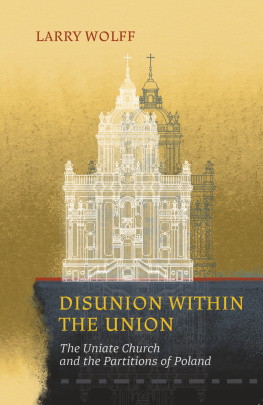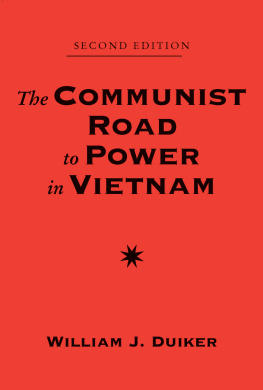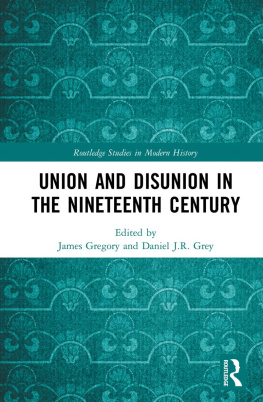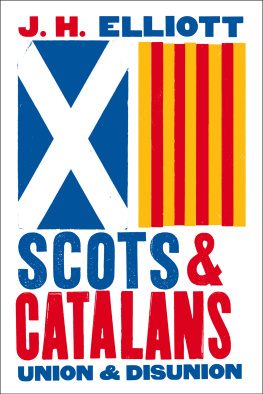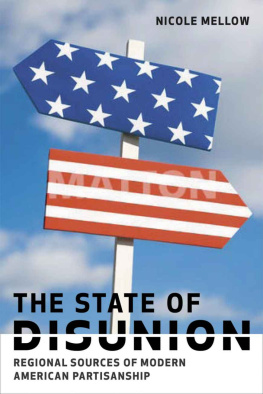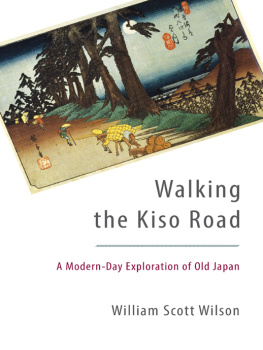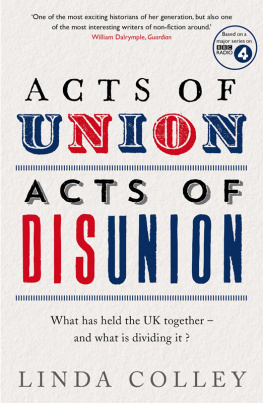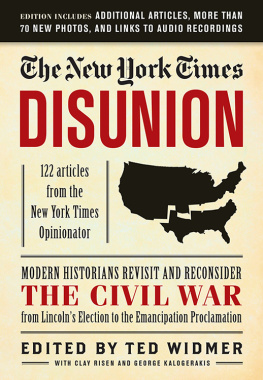William W. Freehling - The Road to Disunion
Here you can read online William W. Freehling - The Road to Disunion full text of the book (entire story) in english for free. Download pdf and epub, get meaning, cover and reviews about this ebook. year: 1990, publisher: Oxford University Press, genre: Detective and thriller. Description of the work, (preface) as well as reviews are available. Best literature library LitArk.com created for fans of good reading and offers a wide selection of genres:
Romance novel
Science fiction
Adventure
Detective
Science
History
Home and family
Prose
Art
Politics
Computer
Non-fiction
Religion
Business
Children
Humor
Choose a favorite category and find really read worthwhile books. Enjoy immersion in the world of imagination, feel the emotions of the characters or learn something new for yourself, make an fascinating discovery.

- Book:The Road to Disunion
- Author:
- Publisher:Oxford University Press
- Genre:
- Year:1990
- Rating:4 / 5
- Favourites:Add to favourites
- Your mark:
- 80
- 1
- 2
- 3
- 4
- 5
The Road to Disunion: summary, description and annotation
We offer to read an annotation, description, summary or preface (depends on what the author of the book "The Road to Disunion" wrote himself). If you haven't found the necessary information about the book — write in the comments, we will try to find it.
The Road to Disunion — read online for free the complete book (whole text) full work
Below is the text of the book, divided by pages. System saving the place of the last page read, allows you to conveniently read the book "The Road to Disunion" online for free, without having to search again every time where you left off. Put a bookmark, and you can go to the page where you finished reading at any time.
Font size:
Interval:
Bookmark:
The Road to Disunion
Secessionists at Bay
17761854
VOLUME I
Secessionists at Bay
17761854
WILLIAM W. FREEHLING

Oxford University Press
Oxford New York Toronto
Delhi Bombay Calcutta Madras Karachi
Petaling Jaya Singapore Hong Kong Tokyo
Nairobi Dar es Salaam Cape Town
Melbourne Auckland
and associated companies in
Berlin Ibadan
Copyright 1990 by William W. Freehling
First published in 1990 by Oxford University Press, Inc.,
198 Madison Avenue, New York, New York 10016
First issued as an Oxford University Press paperback, 1991
Oxford is a registered trademark of Oxford University Press
All rights reserved. No part of this publication may be reproduced,
stored in a retrieval system, or transmitted, in any form or by any means,
electronic, mechanical, photocopying, recording, or otherwise,
without the prior permission of Oxford University Press, Inc.
Library of Congress Cataloging-in-Publication Data
Freehling, William W., 1935
The road to disunion / William W. Freehling.
p. cm.
Contents: v. 1. Secessionists at bay, 17761854
ISBN 978-0-19-505814-7; 978-0-19-507259-4 (PBK.)
1. United StatesHistoryCivil War, 18611865Causes.
2. Secession. 3. Southern StatesPolitics and
government17751865. 4. United StatesPolitics and
government18151861. I. Title
E468.9.F84 1990
973.711dc20 8926511 CIP
10 12 14 13 11
Printed in the United States of America
For Alison
Two decades ago, I envisioned a quick solution to an important mystery. I would research the few months of the southern secession crisis, 18601. My findings would reveal short-run causes of disunion. My chronicle would illuminate long-run reasons why the South strode down the road to disunion.
Those simplistic beginnings failed to anticipate secessions complicated climax. Manuscripts on disunion particularly exuded such a variety of Southerners as to shatter my imagined South. Seeking more perspective than a culminating crisis could provide, I reluctantly took one step, then another back down the road to disunion. Had I known that I would ultimately arrive in Thomas Jeffersons era, I might never have left Abraham Lincolns. But at this culminating moment, I rejoice at the extended odyssey backwards. No shorter journey could have yielded this rich story.
My chief objection to previous accounts of the antebellum South, including my own, is that portraits tend to flatten out the rich varieties of southern types. The South is sometimes interpreted as this, sometimes as that. But whatever the interpretation, the image is usually of a monolith, frozen in its thisness or thatness. The southern world supposedly thawed only once, in the so-called Great Reaction of the 1830s. Then Thomas Jeffersons South, which considered slavery a terminable curse, supposedly turned into John C. Calhouns South, which considered enslavement a perpetual blessing. Thereafter, little supposedly changed, little varied, little remained undecided. Gone from this timeless flatland is the American nineteenth centurys exuberant essence: growth, movement, profusion of pilgrims, a chaotic kaleidoscope of regions, classes, religions, and ethnic groups.
The truththe fresh understanding that makes a new epic of the antebellum South possibleis that before and after the mid-1830s in the South, as well as the North, change was omnipresent, varieties abounded, visions multiplied. Antebellum Southerners constantly acted on their knowledge that their world was not set in stone, that many destinies beckoned, that clashes of sections and
Secessionists are the desperadoes in the Old Souths story. They sought to forge a culture most historians assume had long since been consolidateda region standing monolithically for slaverys permanent glory. They winced at fellow Southerners who clung to the Jeffersonian dream that slavery would slowly drain away, assuming the right conditions could be secured. Between Calhouns unconditional desire to perpetuate slavery and Jeffersons conditional hope to end the institution, so many Southerners fought for so many visions that secessionists lost and lost and lost, losing finally all confidence in winning. After Abraham Lincoln was elected in 1860, this minority of the southern minority conspired to bring off a last gamble. In 1861, to extremists amazement, disunion triumphed. This is the tale of how and why vanquished secessionists became victorsand of a South which remained too divided for the victors to win their gamble with the sword.
While Yankees frequently people and lend perspective to this story of the southern road to disunion, my focus rarely deviates from the slaveholders domain. The value of the regional concentration transcends the South, for in national mainstream politics an aggressively defensive slavocracy so often seized the offensive. Outside the mainstream, northern extremists attacked first. But antislavery Yankees began to capture the northern majoritys sympathy only after Southerners demanded national proslavery laws. Both the Slavepowers demands for legislative protection and the way the minority pushed demands through majoritarian processes violated northern senses of democratic government. When issues changed from black slavery to white republicanism, from an unfortunate institution on the other sections turf to unacceptable ultimatums about a common democratic government, Yankees stiffened into anti-southern postures.
These southern drives for minority protection flowed partly out of fears that the South could not stand solid against the northern extreme. The most committed slaveholders particularly worried about their less committed, less enslaved hinterlands lying close to the free North. Concern about whether a free and open republican milieu could weaken despotism in lightly enslaved areas helps explain why a slaveholder minority, when facing a smaller abolitionist minority, continually offended Northerners majoritarian sensibilities with attempts to shutter off democratic challenges.
The irony was that the enslaved South was itself deeply into democratic cults. As inegalitarian as slavery was, it also impelled southern variations on American nineteenth-century egalitarianism. I here follow debates between southern-style and northern-style egalitarian republicans, as well as between Southerners and each other, that go beyond mere political history narrowly defined. I hope to show that two antithetical abstract systems, democracy and despotism, when forced to rub against each other in close southern quarters, intriguingly intermeshed to shape not just a politics but a world. I also seek to show that the narrative literary form, sadly maligned among professional historians these days, remains invaluable to humanize how a collision of abstractions helped produce the crisis of a people.
My narrative of the various Souths encounter with despotism and democracy remains unfinished at the end of this volume. A subsequent volume will carry the story from the mid-1850s to the outbreak of war. Much information in Volume II may add credibility to Volume I. The main discussion of proslavery ideology, for example, had to be in Volume II because most of the Souths greatest proslavery writers published not during some fancied Great Reaction in the mid-1830s but twenty years later, uncomfortably close to the time of southern rebellion. That last-minute effort to forge a world, a world view, and a nationthe major theme in Volume IIreveals much about earlier clashes over the kind of world Southerners wanted. So, too, Volume IIs discussion of Caribbean expansion, which South Carolina Disunionists rather opposed and southwestern Unionists usually favored, will illuminate earlier divisions between older and newer Deep Souths. Still another important theme in my subsequent volume, the most secessionist Souths fear that Abraham Lincoln would build a Republican Party in the least secessionist South, will re-emphasize a key theme in this volume, the difference between the more southern and the more northern sections of the South over whether slavery should be terminated, always on the assumption that proper conditions could be obtained.
Next pageFont size:
Interval:
Bookmark:
Similar books «The Road to Disunion»
Look at similar books to The Road to Disunion. We have selected literature similar in name and meaning in the hope of providing readers with more options to find new, interesting, not yet read works.
Discussion, reviews of the book The Road to Disunion and just readers' own opinions. Leave your comments, write what you think about the work, its meaning or the main characters. Specify what exactly you liked and what you didn't like, and why you think so.


